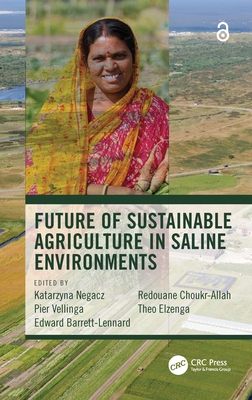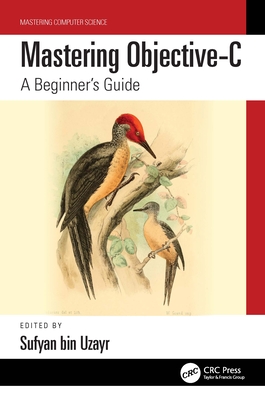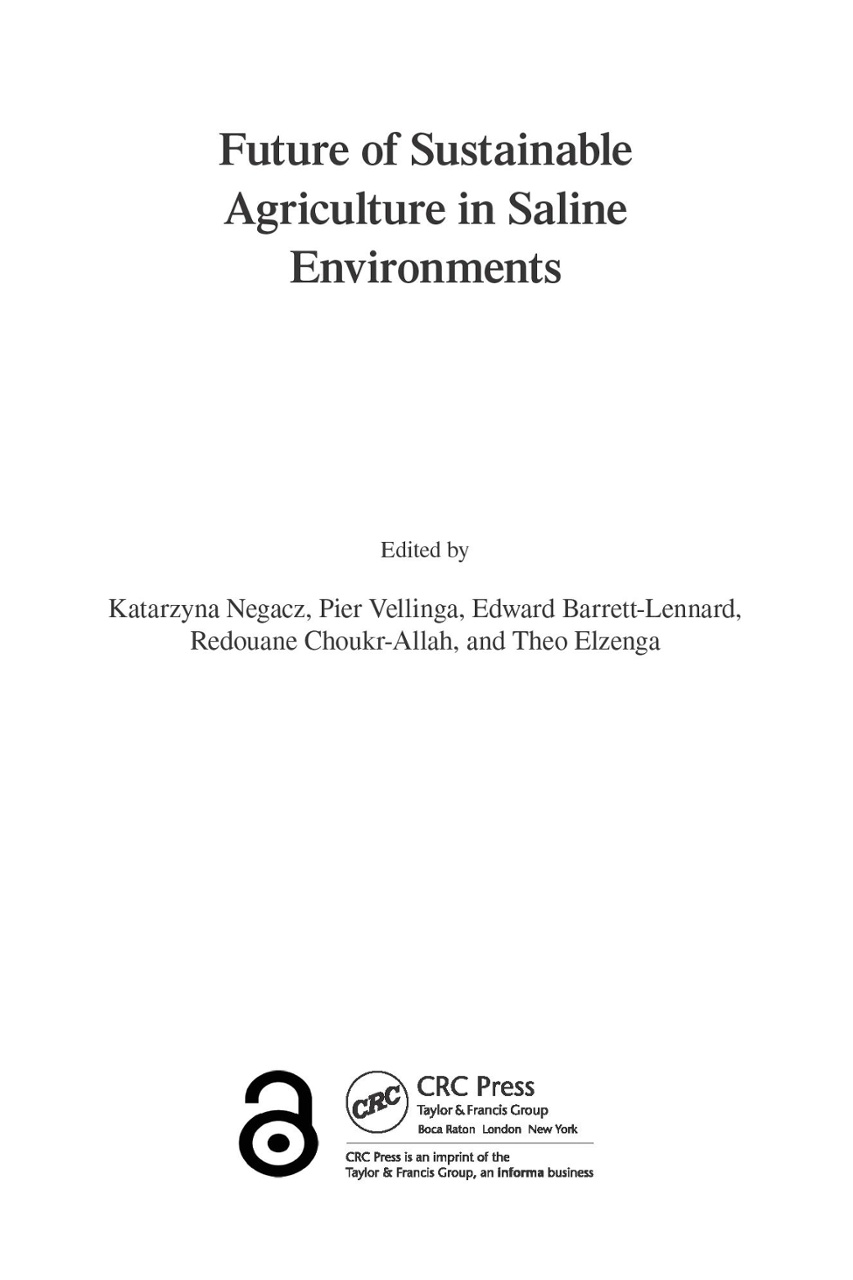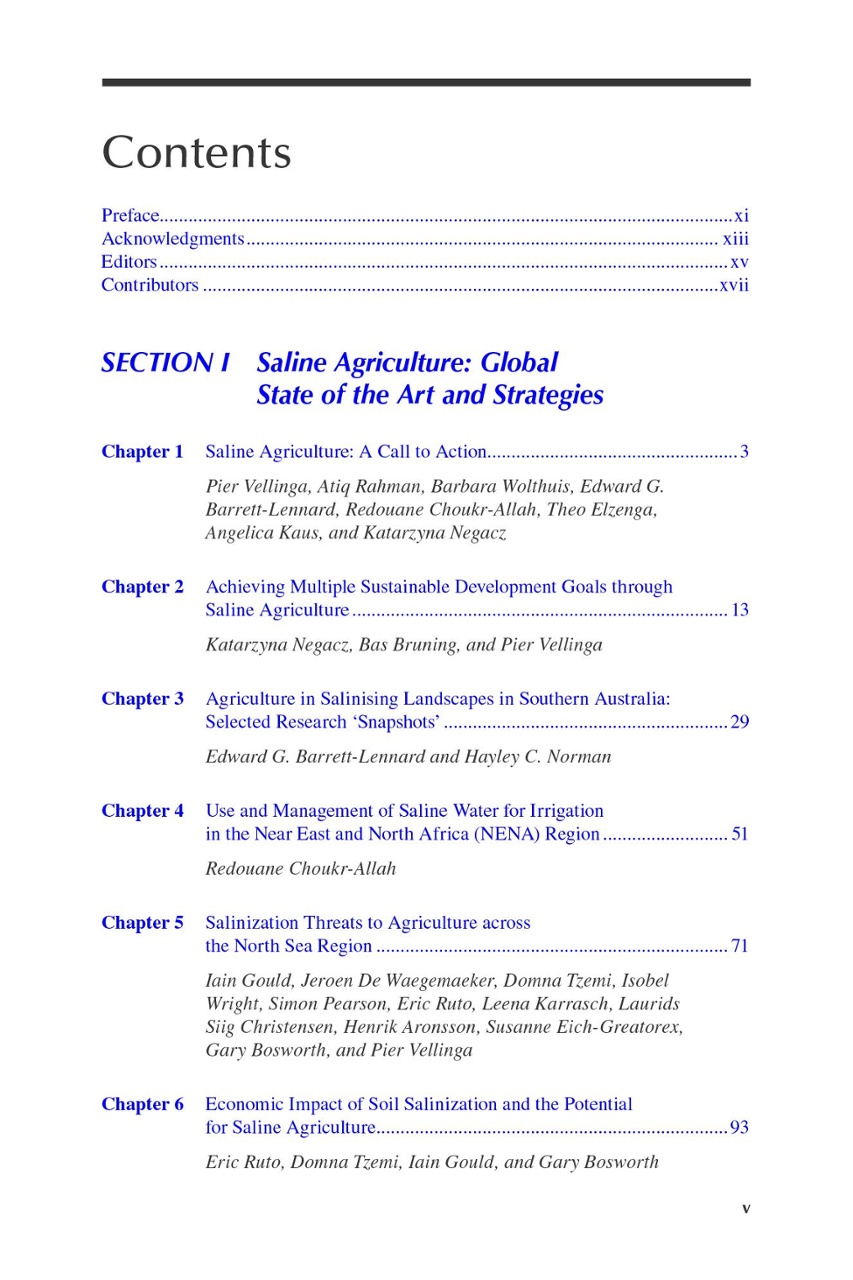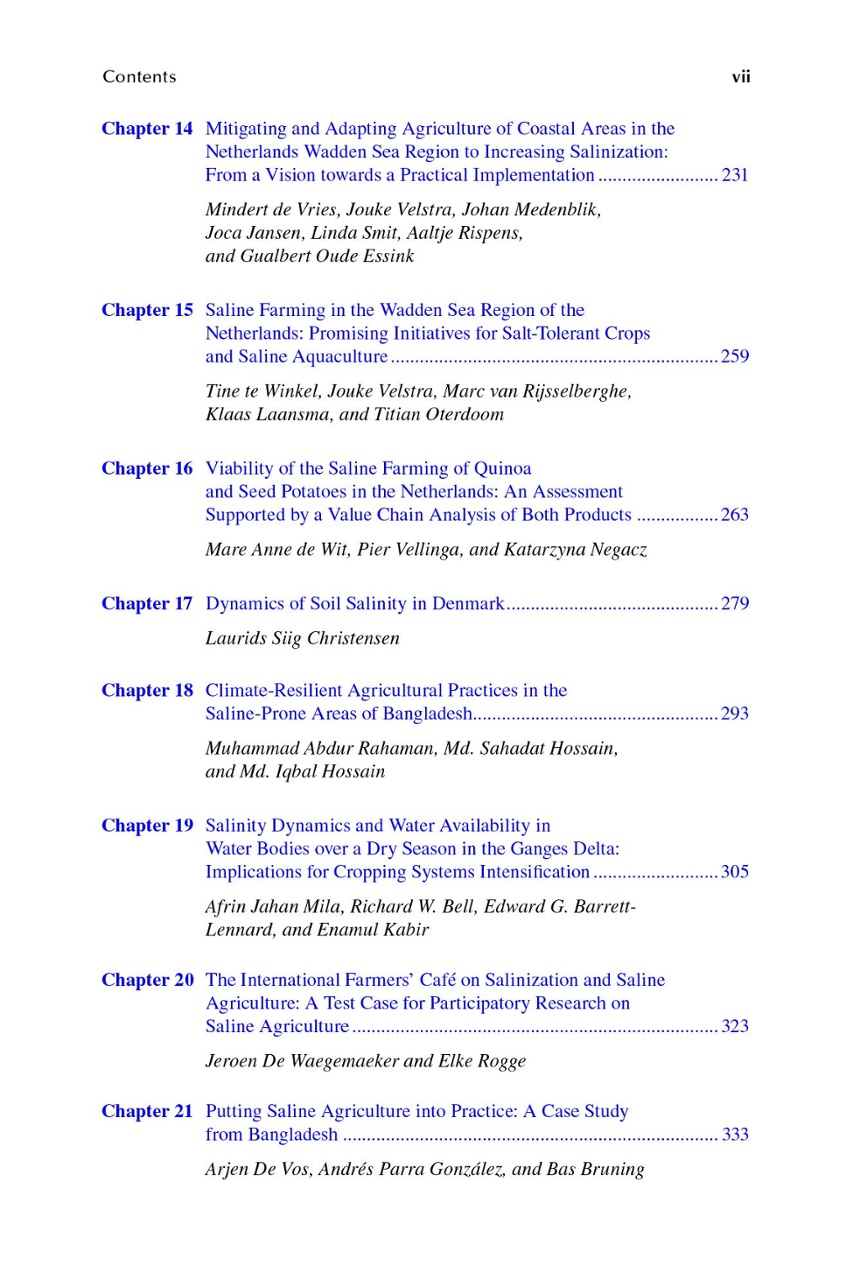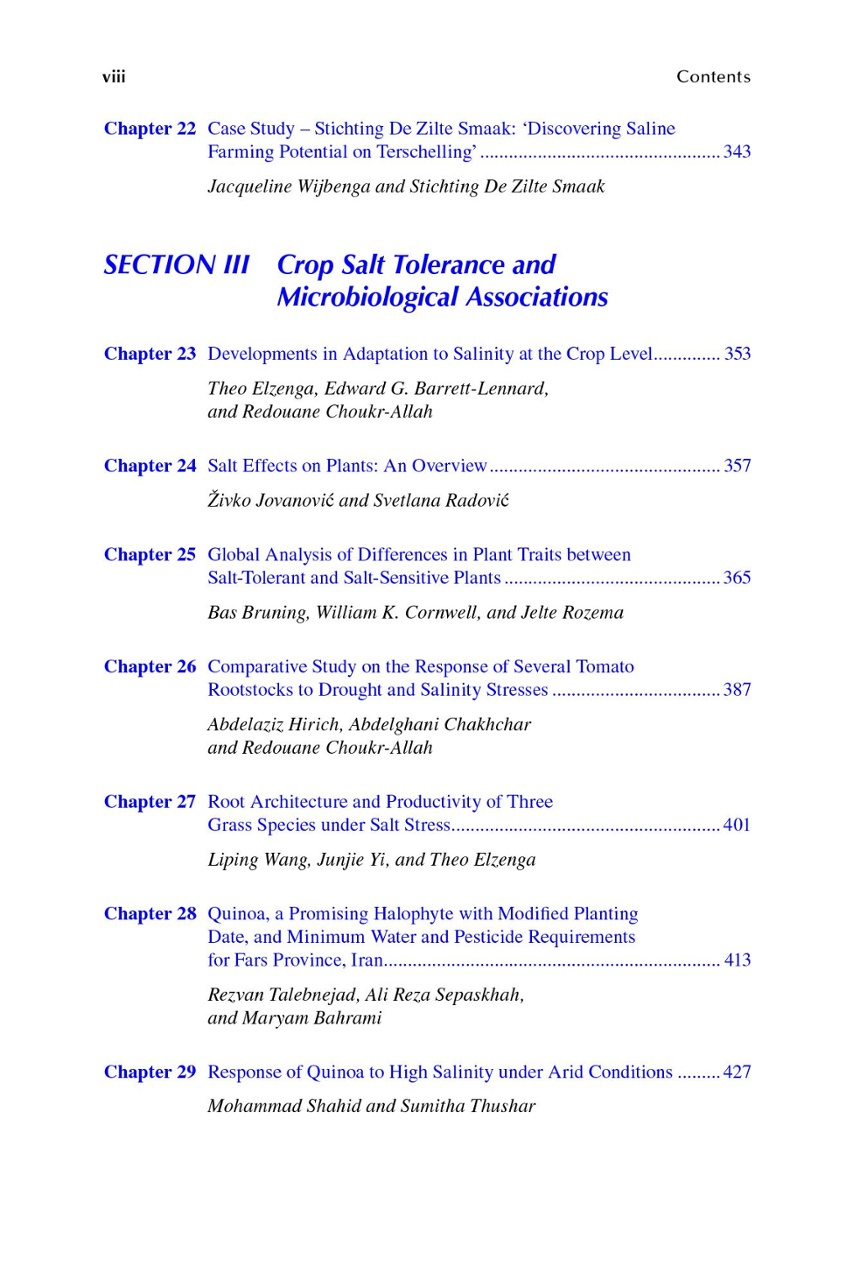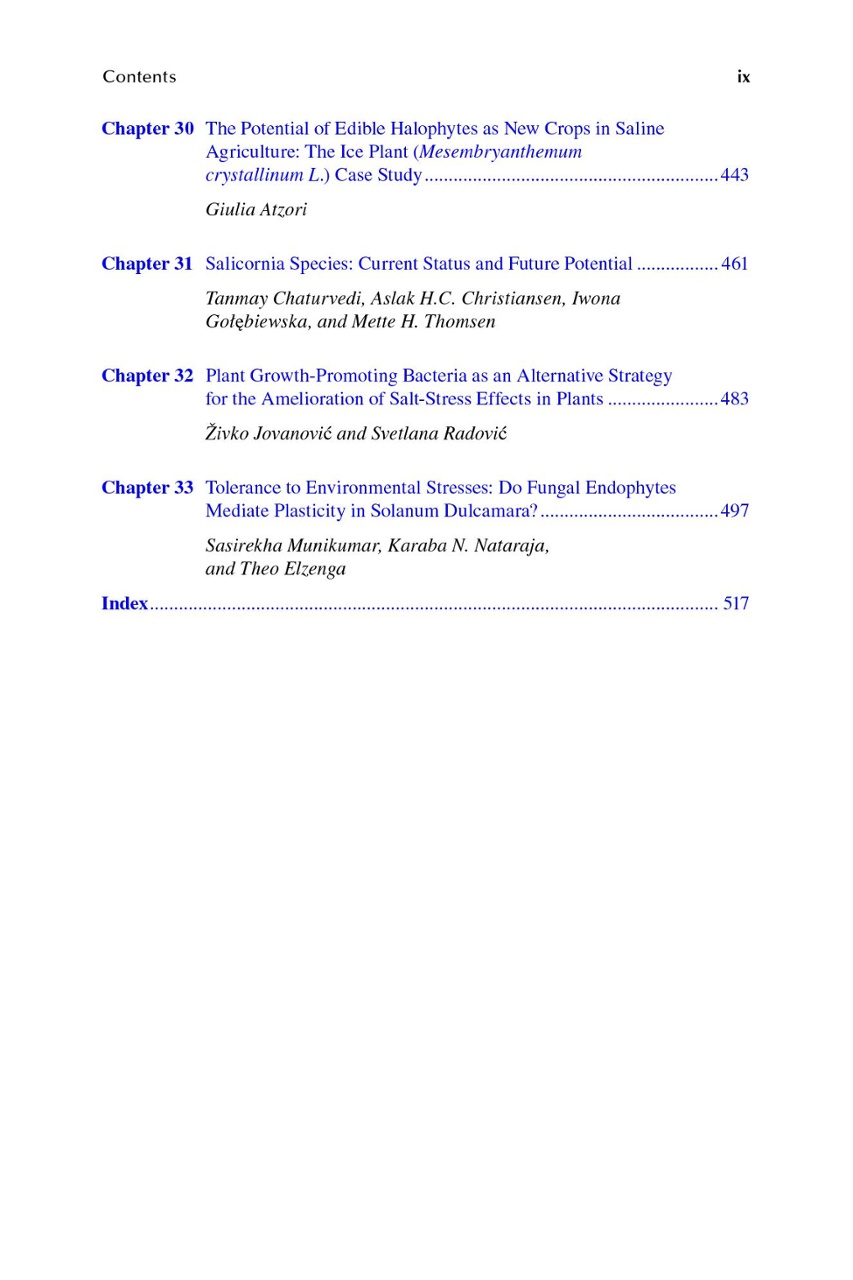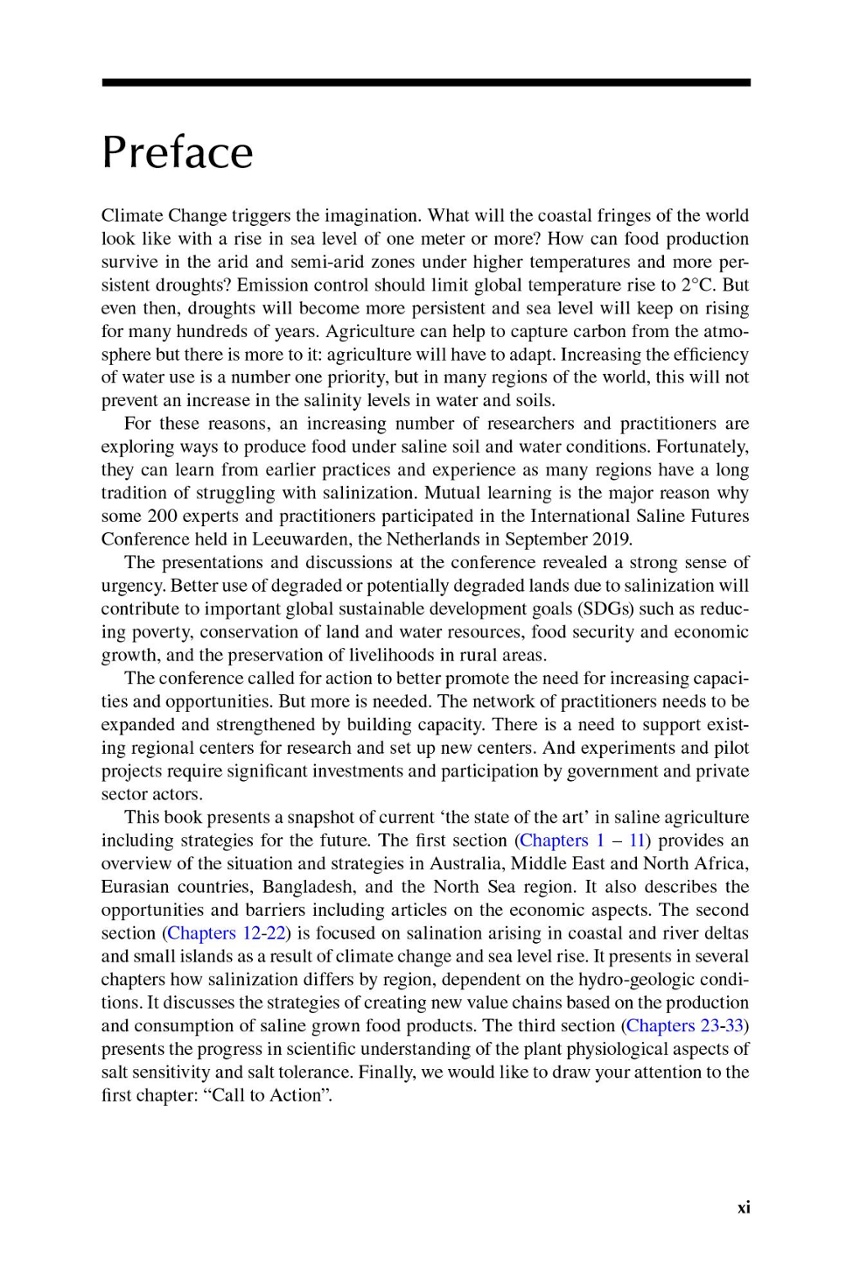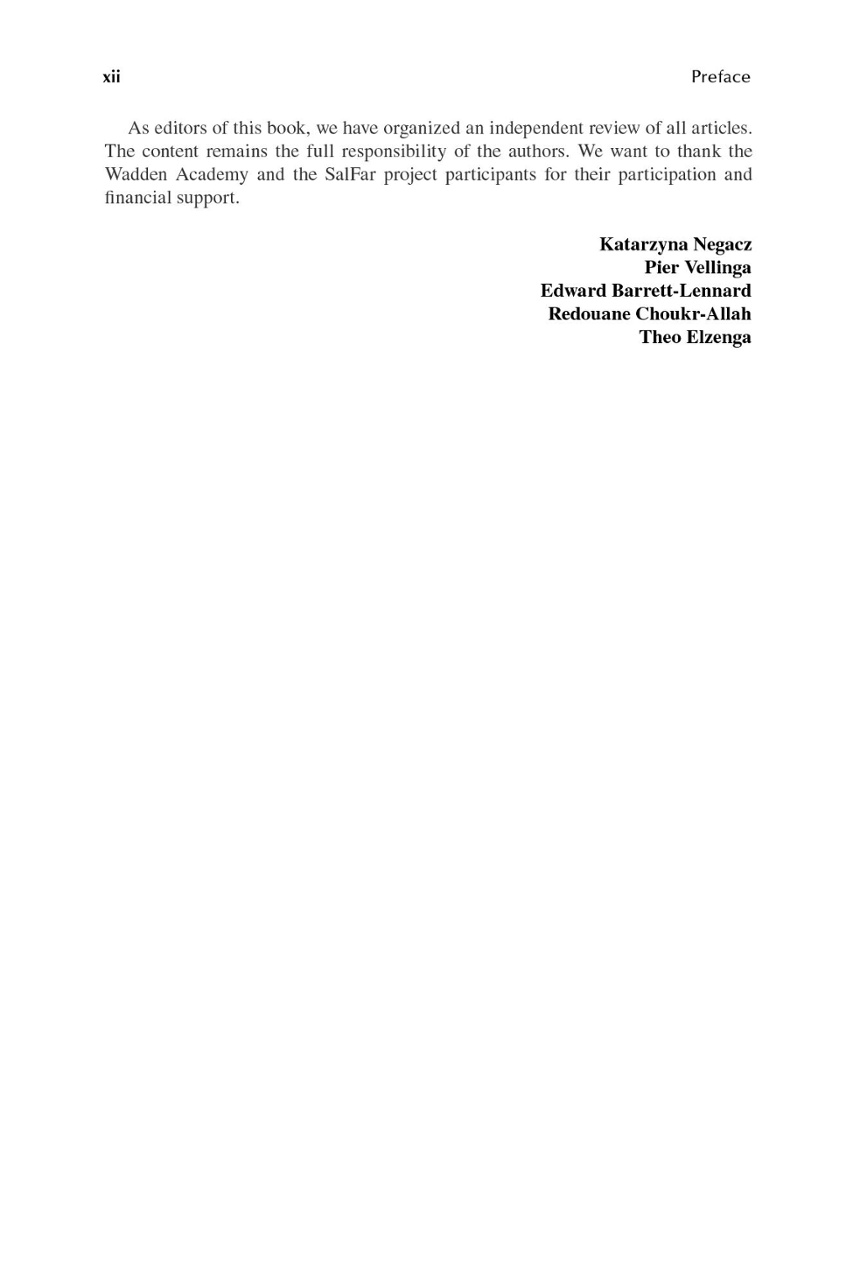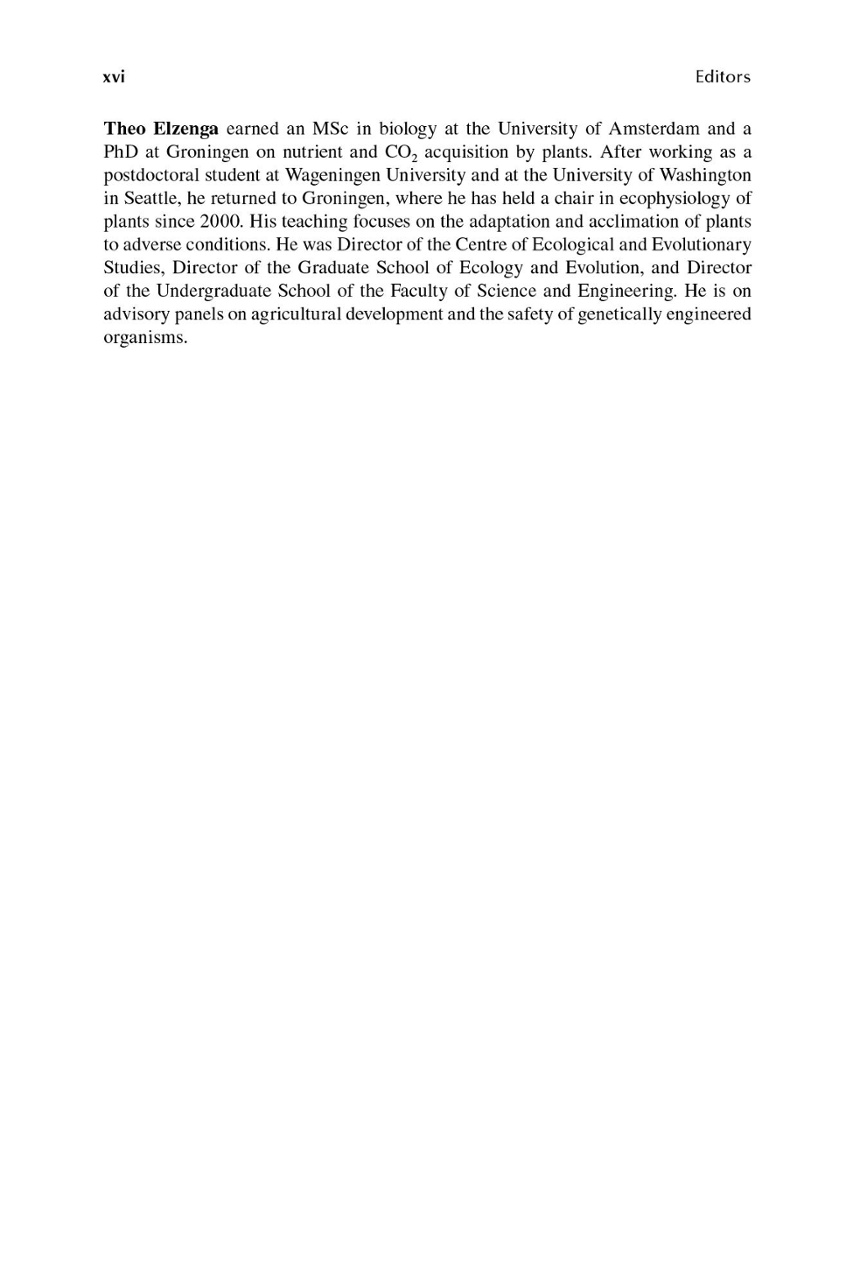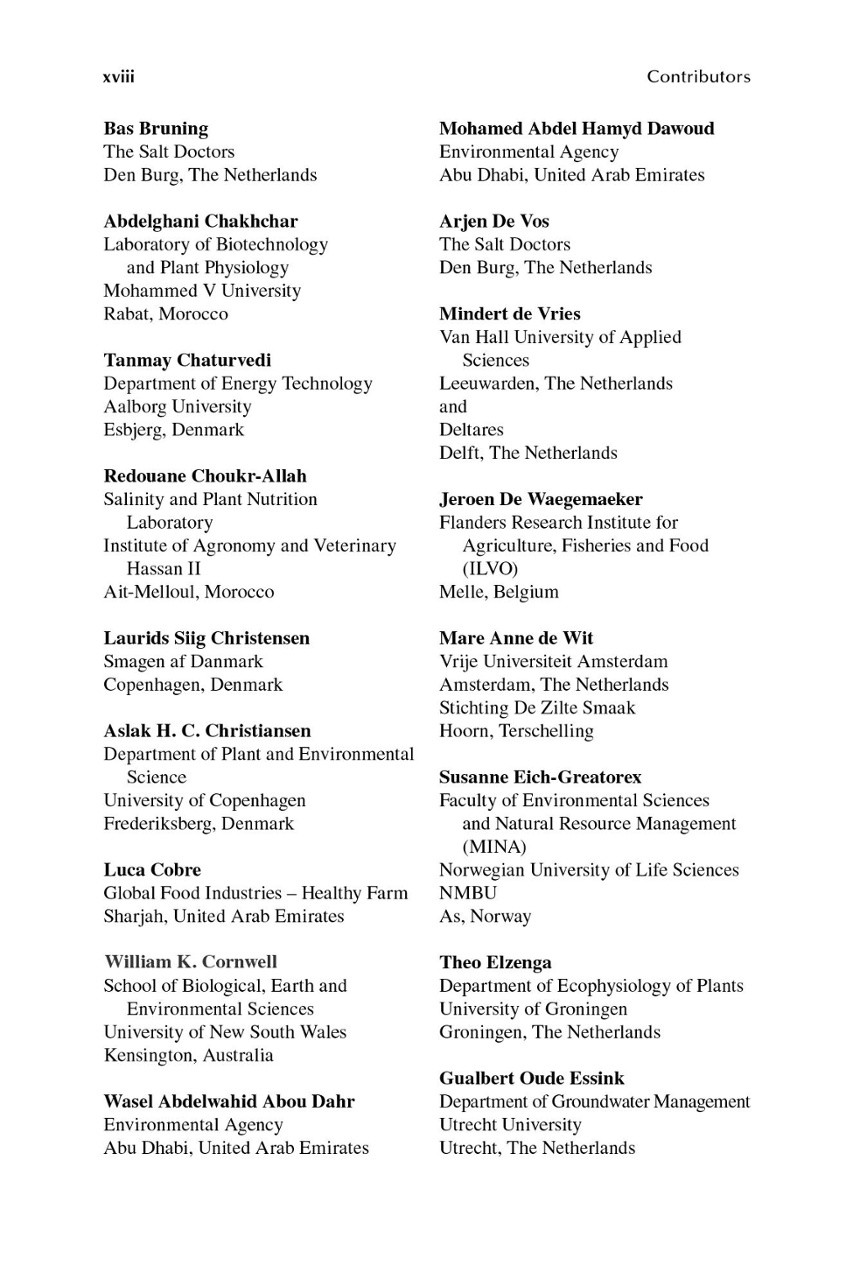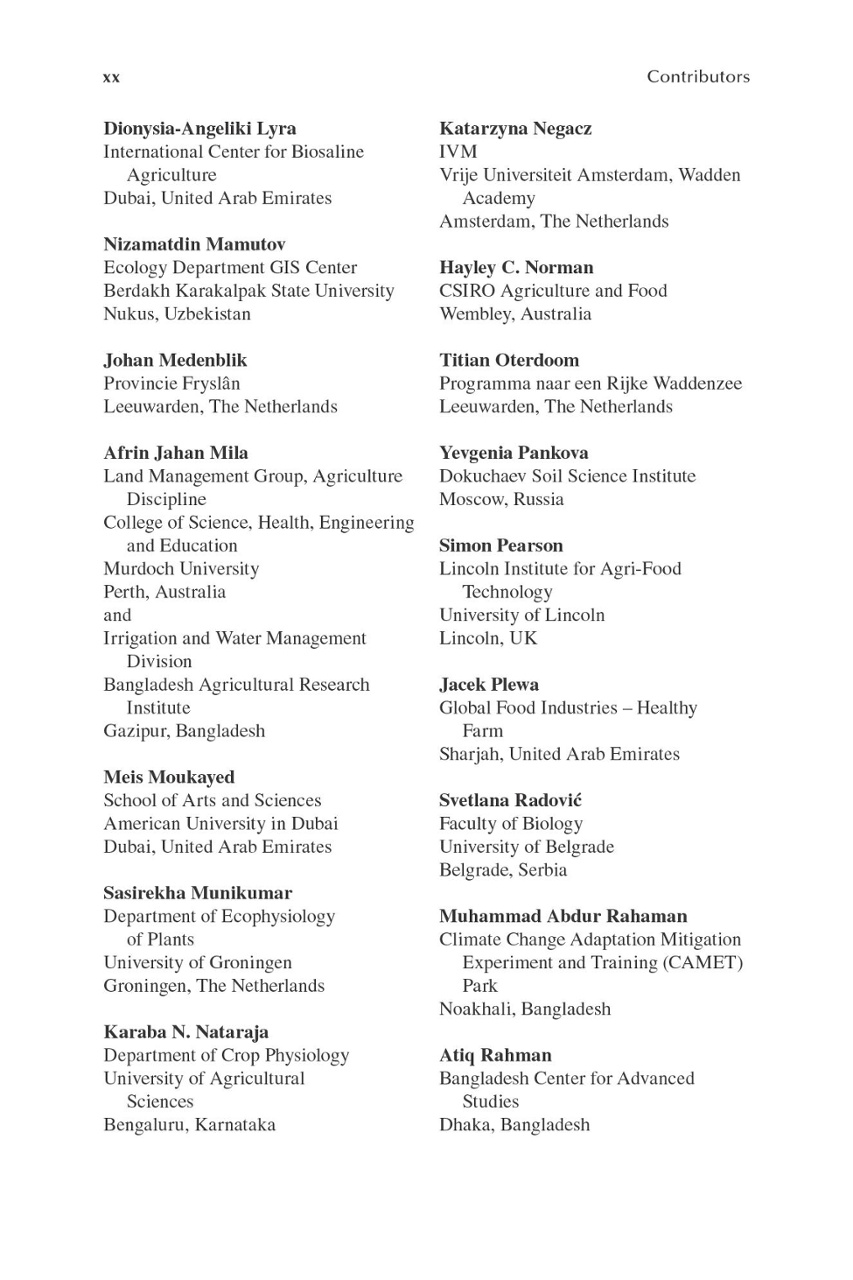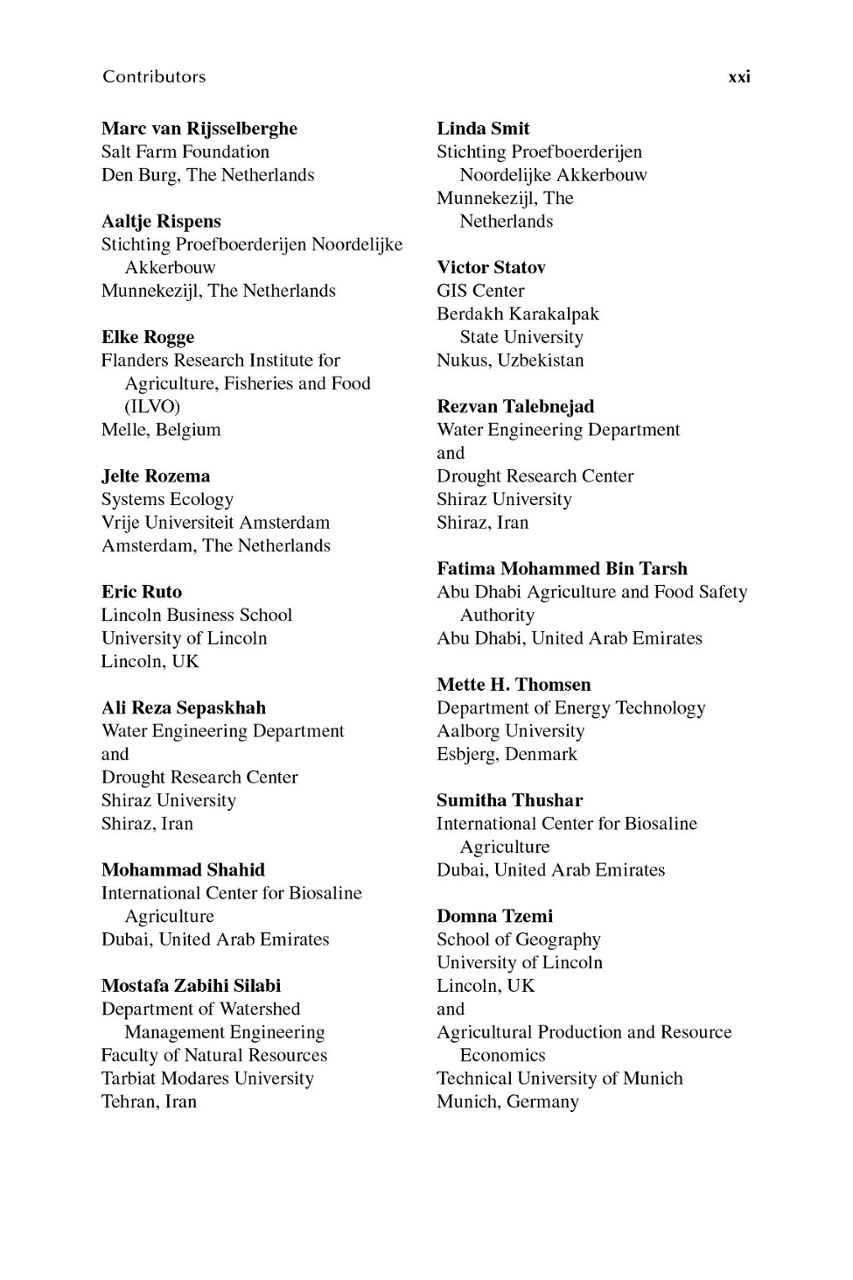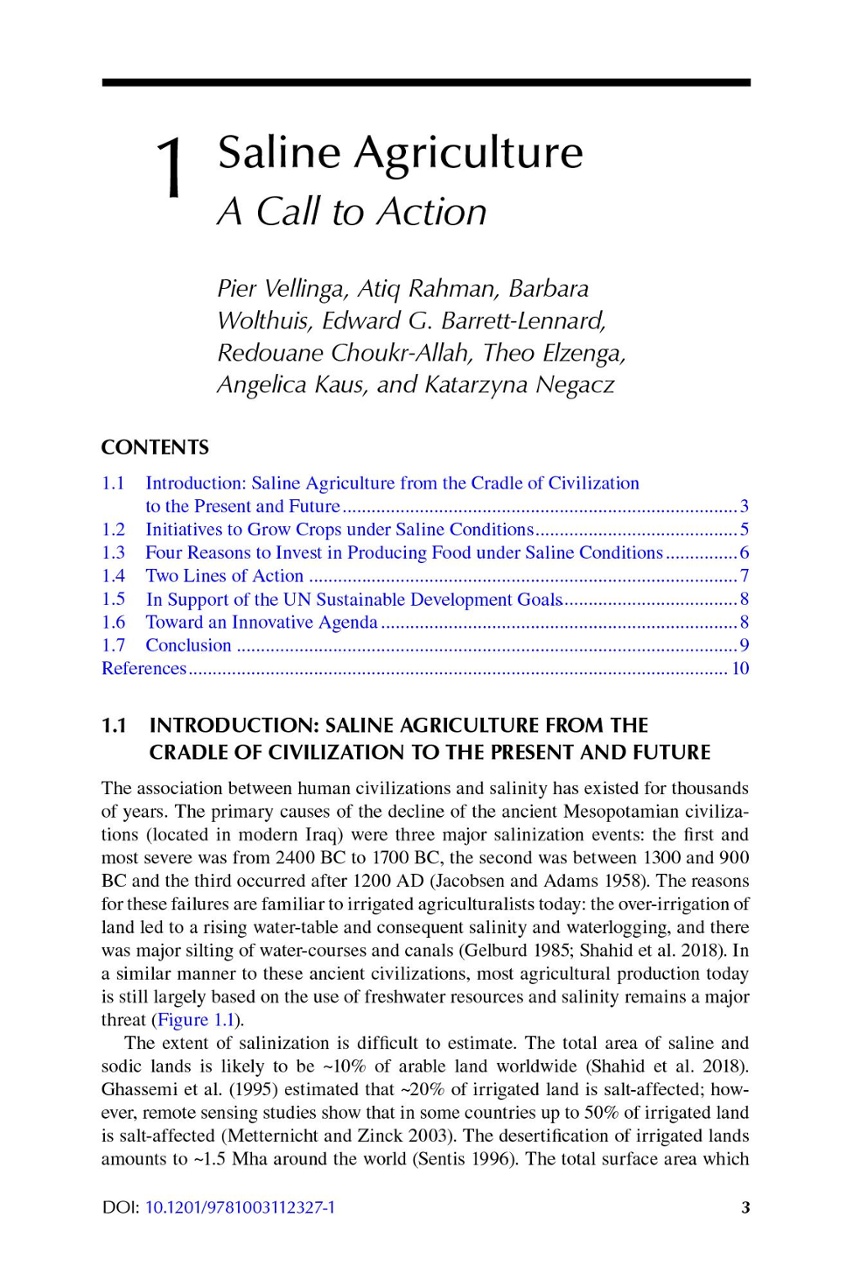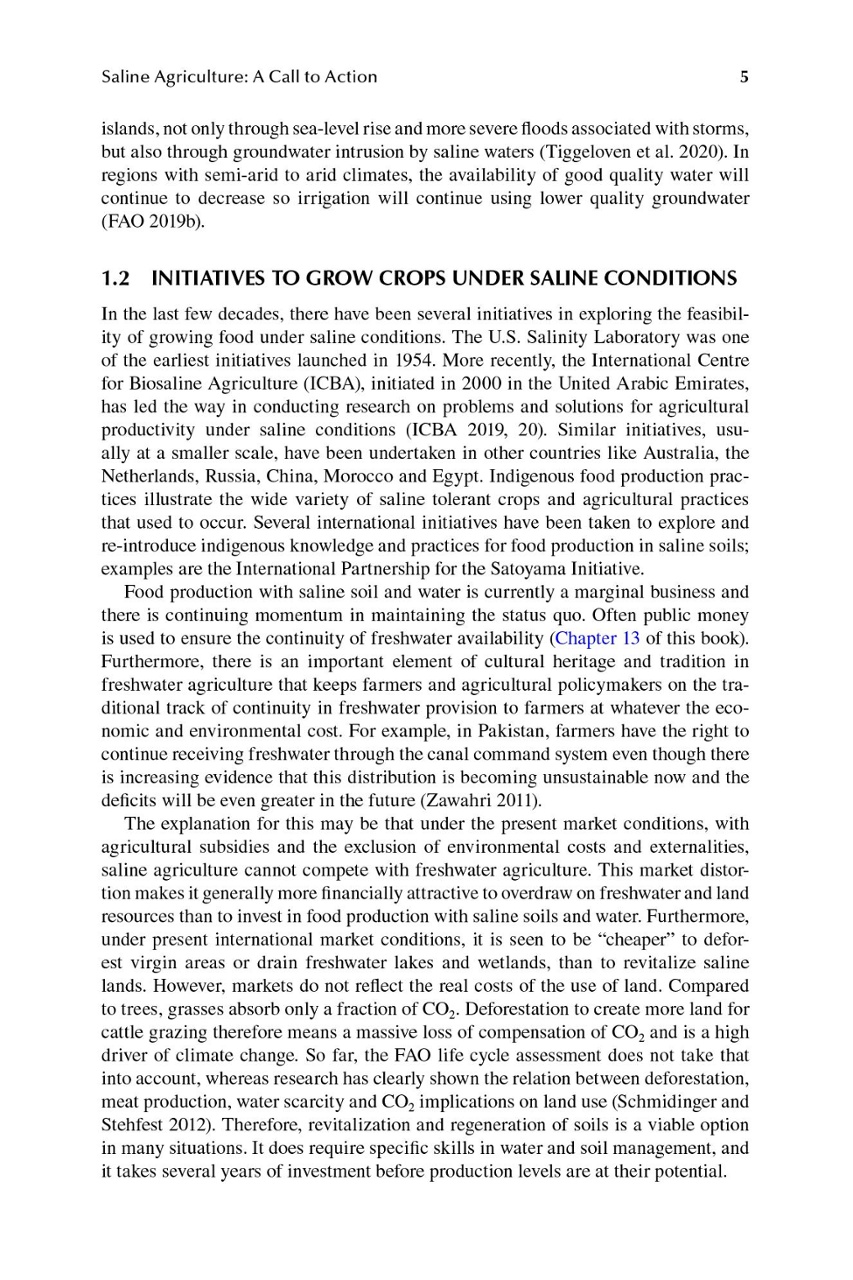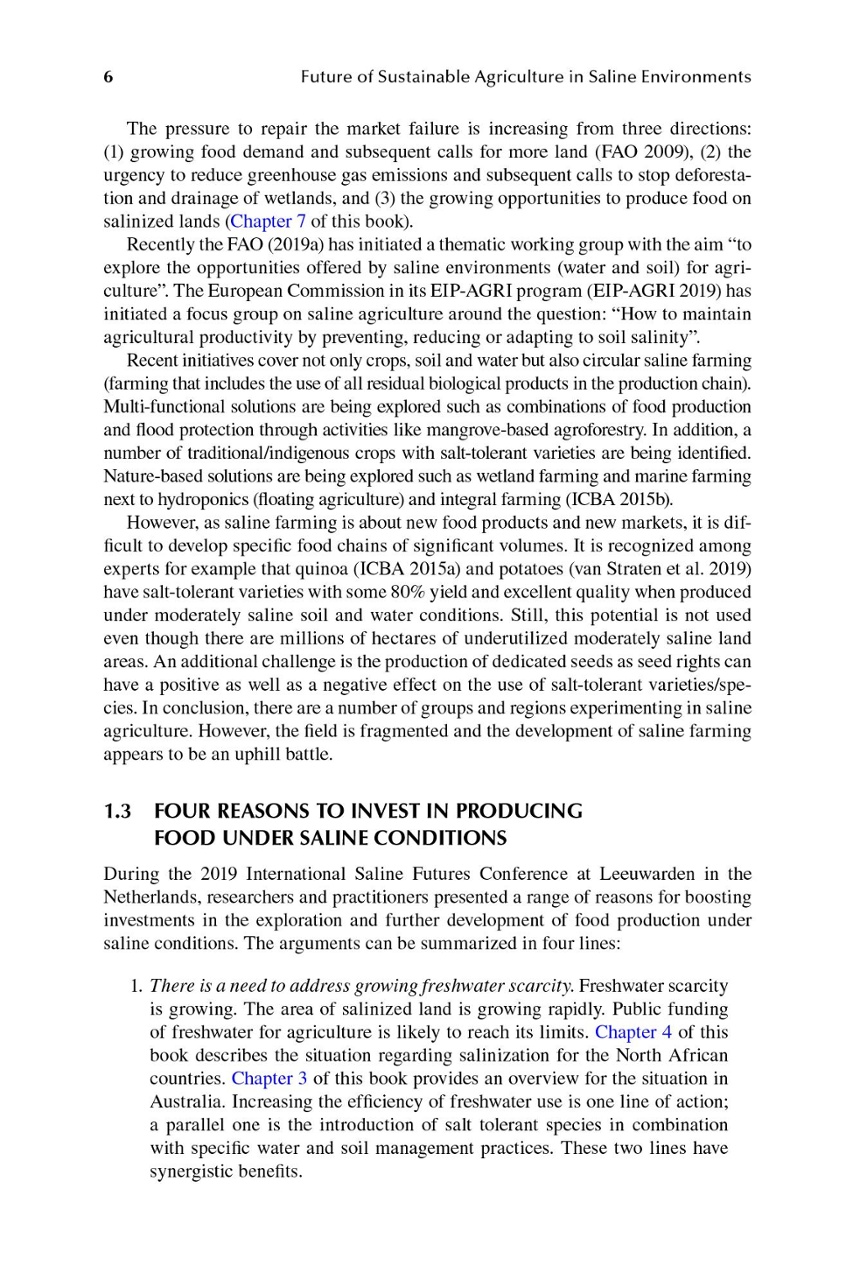图书简介
Food production on present and future saline soils deserves the world’s attention particularly because food security is a pressing issue, millions of hectares of degraded soils are available worldwide, freshwater is becoming increasingly scarce, and the global sea-level rise threatens food production in fertile coastal lowlands. Future of Sustainable Agriculture in Saline Environments aims to showcase the global potential of saline agriculture. The book covers the essential topics, such as policy and awareness, soil management, future crops, and genetic developments, all supplemented by case studies that show how this knowledge has been applied. It offers an overview of current research themes and practical cases focused on enhancing food production on saline lands.
FEATURES
Describes the critical role of the revitalization of salt-degraded lands in achieving sustainability in agriculture on a global scale
Discusses practical solutions toward using drylands and delta areas threatened by salinity for sustainable food production
Presents strategies for adaptation to climate change and sea-level rise through food production under saline conditions
Addresses the diverse aspects of crop salt tolerance and microbiological associations
Highlights the complex problem of salinity and waterlogging and safer management of poor-quality water, supplemented by case studies
A PDF version of this book is available for free in Open Access at www.taylorfrancis.com. It has been made available under a Creative Commons Attribution-Non Commercial-No Derivatives 4.0 license.
Section I: Saline Agriculture: Global State of the Art and Strategies 1. Saline Agriculture: A Call to Action Pier Vellinga, Atiq Rahman, Barbara Wolthuis, Edward G. Barrett-Lennard, Redouane Choukr-Allah, Theo Elzenga, Angelica Kaus, and Katarzyna Negacz 2. Achieving Multiple Sustainable Development Goals through Saline Agriculture Katarzyna Negacz, Bas Bruning, and Pier Vellinga 3. Agriculture in Salinising Landscapes in Southern Australia: Selected Research ’Snapshots’ Edward G. Barrett-Lennard and Hayley Norman 4. Use and Management of Saline Water for Irrigation in the Near East and North Africa (NENA) Region Redouane Choukr-Allah 5. Salinization Threats to Agriculture across the North Sea Region Iain Gould, Jeroen De Waegemaeker, Domna Tzemi, Isobel Wright, Simon Pearson, Eric Ruto, Leena Karrasch, Laurids Siig Christensen, Henrik Aronsson, Susanne Eich-Greatorex, Gary Bosworth, and Pier Vellinga 6. Economic Impact of Soil Salinization and the Potential for Saline Agriculture Eric Ruto, Domna Tzemi, Iain Gould, and Gary Bosworth 7. Cost or Benefit? Estimating the Global Economic Potential of Saline Agriculture Katarzyna Negacz and Pier Vellinga 8. Challenges and Opportunities for Saline Agriculture in Coastal Bangladesh Atiq Rahman and Md. Nasir Uddin 9. Innovations of the 21st Century in the Management of Iranian Salt-Affected Lands Zeinab Hazbavi and Mostafa Zabihi Silabi 10 An Approach to Monitoring of Salt-Affected Croplands Using Remote Sensing Data: The Case Study in the Nukus District (Uzbekistan) Maria Konyushkova, Alexander Krenke, Gulchekhra Khasankhanova, Nizamatdin Mamutov, Victor Statov, Anna Kontoboytseva and Yevgenia Pankova 11. From Desert Farm to Fork: Value Chain Development for Innovative Salicornia-Based Food Products in the United Arab Emirates Dionysia-Angeliki Lyra, Efstathios Lampakis, Mohamed Al Muhairi, Fatima Mohammed Bin Tarsh, Mohamed Abdel Hamyd Dawoud, Basem Al Khawaldeh, Meis Moukayed, Jacek Plewa, Luca Cobre, Ohod Saleh Al Masjedi, Khawla Mohammed Al Marzouqi, Hayatullah Ahmadzai, Mansoor Khamees Al Tamimi, and Wasel Abdelwahid Abou Dahr Section II: Biosaline Agriculture in Delta and Coastal Environments 12. Saline Agriculture as a Way to Adapt to Sea Level Rise Pier Vellinga and Edward G. Barrett-Lennard 13. Stakeholder Perspectives on the Issue of Salinization in Agriculture in the Netherlands Isa Camara Beauchampet 14. Mitigating and Adapting Agriculture of Coastal Areas in the Netherlands Wadden Sea Region to Increasing Salinization: From a Vision towards a Practical Implementation Mindert de Vries, Jouke Velstra, Johan Medenblik, Joca Jansen, Linda Smit, Aaltje Rispens, and Gualbert Oude Essink 15. Saline Farming in the Wadden Sea Region of the Netherlands: Promising Initiatives for Salt-Tolerant Crops and Saline Aquaculture Tine te Winkel, Jouke Velstra, Marc van Rijsselberghe, Klaas Laansma, and Titian Oterdoom 16. Viability of the Saline Farming of Quinoa and Seed Potatoes in the Netherlands: An Assessment Supported by a Value Chain Analysis of Both Products Mare Anne de Wit, Pier Vellinga, and Katarzyna Negacz 17. Dynamics of Soil Salinity in Denmark Laurids Siig Christensen 18. Climate-Resilient Agricultural Practices in the Saline-Prone Areas of Bangladesh Muhammad Abdur Rahaman, Md. Sahadat Hossain, and Md. Iqbal Hossain 19. Salinity Dynamics and Water Availability in Water Bodies over a Dry Season in the Ganges Delta: Implications for Cropping Systems Intensification Afrin Jahan Mila, Richard W. Bell, Edward G. Barrett- Lennard, and Enamul Kabir 20. The International Farmers’ Cafe on Salinization and Saline Agriculture: A Test Case for Participatory Research on Saline Agriculture Jeroen De Waegemaeker and Elke Rogge 21. Putting Saline Agriculture into Practice: A Case Study from Bangladesh Arjen De Vos, Andres Parra Gonzalez, and Bas Bruning 22. Case Study - Stichting De Zilte Smaak: ’Discovering Saline Farming Potential on Terschelling’ Jacqueline Wijbenga and Stichting De Zilte Smaak Section III: Crop Salt Tolerance and Microbiological Associations 23. Developments in Adaptation to Salinity at the Crop Level Theo Elzenga, Edward G. Barrett-Lennard, and Redouan Choukr-Allah 24. Salt Effects on Plants: An Overview Zivko Jovanovic and Svetlana Radovic 25. Global Analysis of Differences in Plant Traits between Salt-Tolerant and Salt-Sensitive Plants Bas Bruning, William K. Cornwell, and Jelte Rozema 26. Comparative Study on the Response of Several Tomato Rootstocks to Drought and Salinity Stresses Hirich Abdelaziz, Chakhchar Abdelghani, and Choukr-Allah Redouane 27. Root Architecture and Productivity of Three Grass Species under Salt Stress Liping Wang, Junjie Yi, and Theo Elzenga 28. Quinoa, a Promising Halophyte with Modified Planting Date, and Minimum Water and Pesticide Requirements for Fars Province, Iran Rezvan Talebnejad, Ali Reza Sepaskhah, and Maryam Bahrami 29. Response of Quinoa to High Salinity under Arid Conditions Mohammad Shahid and Sumitha Thushar 30. The Potential of Edible Halophytes as New Crops in Saline Agriculture: The Ice Plant (Mesembryanthemum crystallinum L.) Case Study Giulia Atzori 31. Salicornia Species: Current Status and Future Potential Tanmay Chaturvedi, Aslak H.C. Christiansen, Iwona Golebiewska, and Mette H. Thomsen 32. Plant Growth-Promoting Bacteria as an Alternative Strategy for the Amelioration of Salt-Stress Effects in Plants Zivko Jovanovic and Svetlana Radovic 33 Tolerance to Environmental Stresses: Do Fungal Endophytes Mediate Plasticity in Solanum Dulcamara? Sasirekha Munikumar, Karaba N. Nataraja, and Theo Elzenga
Trade Policy 买家须知
- 关于产品:
- ● 正版保障:本网站隶属于中国国际图书贸易集团公司,确保所有图书都是100%正版。
- ● 环保纸张:进口图书大多使用的都是环保轻型张,颜色偏黄,重量比较轻。
- ● 毛边版:即书翻页的地方,故意做成了参差不齐的样子,一般为精装版,更具收藏价值。
关于退换货:- 由于预订产品的特殊性,采购订单正式发订后,买方不得无故取消全部或部分产品的订购。
- 由于进口图书的特殊性,发生以下情况的,请直接拒收货物,由快递返回:
- ● 外包装破损/发错货/少发货/图书外观破损/图书配件不全(例如:光盘等)
并请在工作日通过电话400-008-1110联系我们。
- 签收后,如发生以下情况,请在签收后的5个工作日内联系客服办理退换货:
- ● 缺页/错页/错印/脱线
关于发货时间:- 一般情况下:
- ●【现货】 下单后48小时内由北京(库房)发出快递。
- ●【预订】【预售】下单后国外发货,到货时间预计5-8周左右,店铺默认中通快递,如需顺丰快递邮费到付。
- ● 需要开具发票的客户,发货时间可能在上述基础上再延后1-2个工作日(紧急发票需求,请联系010-68433105/3213);
- ● 如遇其他特殊原因,对发货时间有影响的,我们会第一时间在网站公告,敬请留意。
关于到货时间:- 由于进口图书入境入库后,都是委托第三方快递发货,所以我们只能保证在规定时间内发出,但无法为您保证确切的到货时间。
- ● 主要城市一般2-4天
- ● 偏远地区一般4-7天
关于接听咨询电话的时间:- 010-68433105/3213正常接听咨询电话的时间为:周一至周五上午8:30~下午5:00,周六、日及法定节假日休息,将无法接听来电,敬请谅解。
- 其它时间您也可以通过邮件联系我们:customer@readgo.cn,工作日会优先处理。
关于快递:- ● 已付款订单:主要由中通、宅急送负责派送,订单进度查询请拨打010-68433105/3213。
本书暂无推荐
本书暂无推荐
